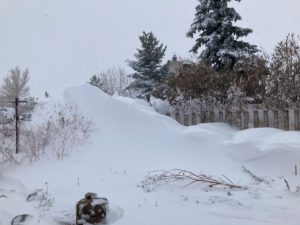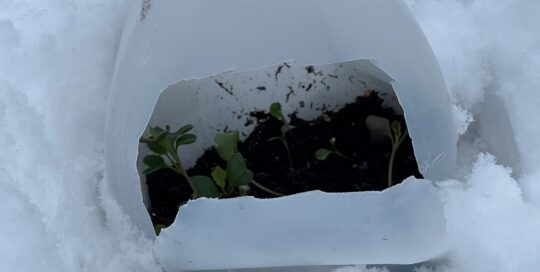What to know about winter covering in the garden
Views: 688

With an unseasonably warm autumn, which has followed suit with our hot summer, it’s time to consider what we need to know about winter covering in the garden. While many gardeners don’t need to worry about this, for those who live in the northern climates, there are a few things that fair best with protection.
Winter covering roses
Unless you are growing hardy shrubs or nearly native roses, hybrid roses need some help. Because the graft of the tea, floribunda or grandiflora roses are not hardy, they are susceptible to freezing and thawing cycles, as well as extreme cold. If they are not covered, the plant might survive, but will most likely die at the graft, reverting back to the original rootstock. For those who love their beautiful hybrids, this is a less than desirable outcome.
The easiest and most affective way to protect this graft union is by covering the rose with six to eight inches of soil or a compost mix. Prior to covering, particularly more temperate and human regions, cut back the rose to approximately 24-30 inches, and trim out any dead canes. For those of us in the more northern regions, cut out any dead or diseased canes, but be conservative with cutting it back. With the tendency to winter kill on the top, it is prudent trim more in the spring.
The best way to protect climbing roses in northern climates is to detach them from their trellis and set them back on the ground. Then you can cover the graft with soil, as well as put a layer of straw or other mulch over the stems. Sometimes it’s not conducive if the plant is too large, but it’s a good way to protect younger climbing roses.
Let snow do most of the work
For most other perennials is not imperative to cover them with anything. In reality, a good winter blanket of snow does the best job. The one exception might be for perennials that are on the edge of your growing zone. For instance, if you’re trying to grow hibiscus in a Zone 4, it will require extra protection.
The other exception is if you have an unusually snow free winter. If you’re not receiving your typical amounts of snow by the end of the year, consider mulching any perennials that might be more susceptible to winter freezing and thawing cycles. In past years, one of our greatest challenges was plants that heaved themselves out of the ground. This was due to that freezing and thawing situation. But the easiest way to remedy it is to buy placing a 3 to 4 inch layer of mulch or straw over the plants.
Keeping vegetables in the ground
There are a number of vegetables, particularly carrots, that winter just fine in the ground. The key is a thick blanket of mulch. For us who live in areas where the temperatures dips to -20° or colder, usually about 18 inches of straw will do the trick. In windy areas be sure to place a tarp over the top so you don’t lose your mulch. To harvest the carrots, simply pull back the tarp, push away the straw and dig what you need.
Be watchful for pests when we cover in the garden
Obviously winter isn’t the time to worry about insects so much, but mice can be problematic. They recognize the benefits of a thick layer of straw and might take up residence. This isn’t a big deal unless they chew on the plants you were trying to protect. If they are doing considerable damage, you need to weigh the benefits of the mulch versus potential damage from the mice.
The wind is howling today, but it is unusually warm for the middle of November. Despite this respite that we’re having from winter weather, I know I need to get on the ball and protect the few plants in my garden that benefit from winter covering. I don’t wanna be caught off guard if the temperatures decide to plummet.
Meet Amy Grisak
Amy is a freelance author and photographer in Great Falls, MT who specializes in gardening, foods, and sustainable agriculture. She provides information on every kind…
Amy's Recent Posts

Try Your Hand at Winter Sowing to Gain a Jump on the Season








